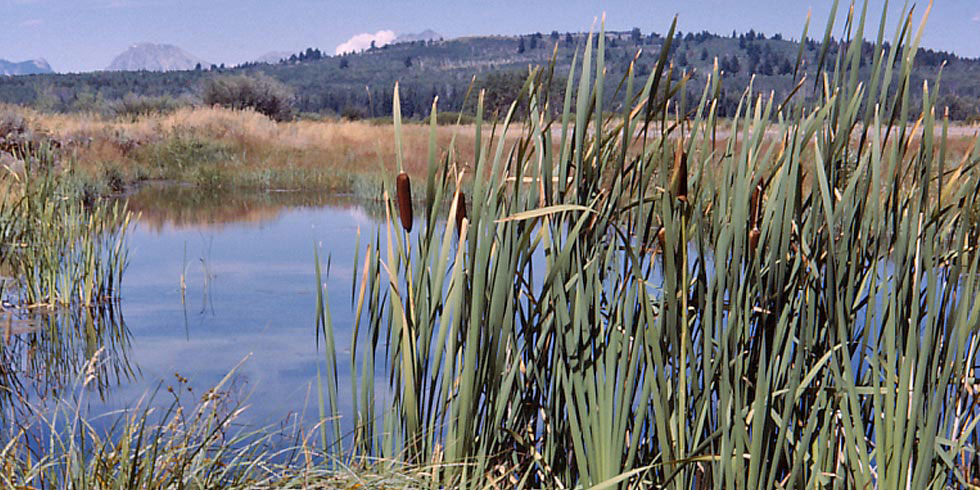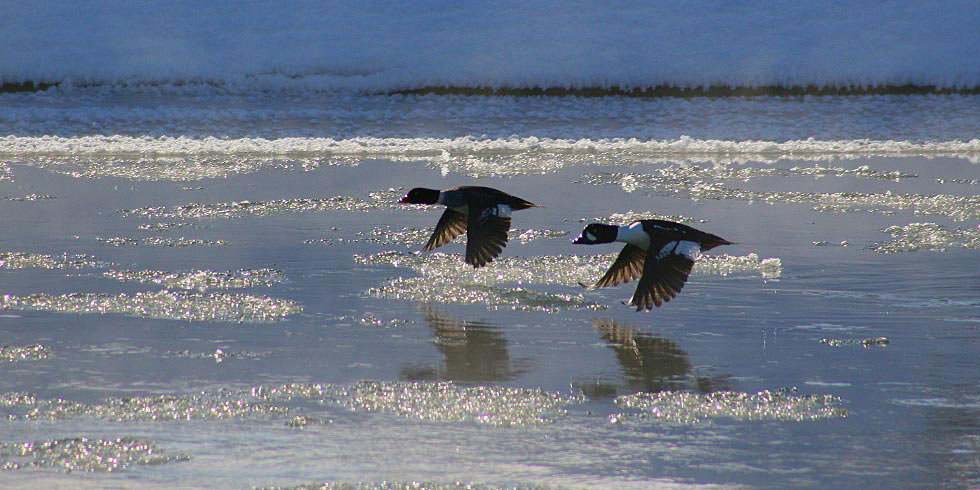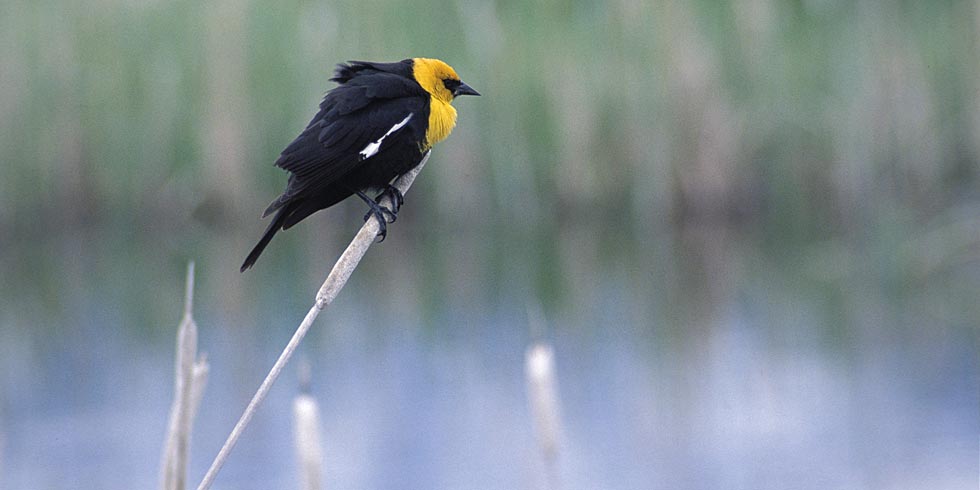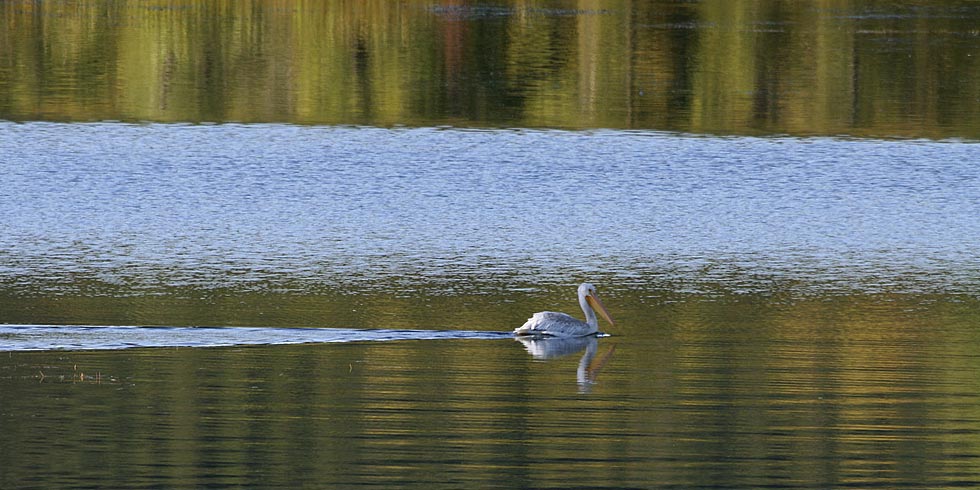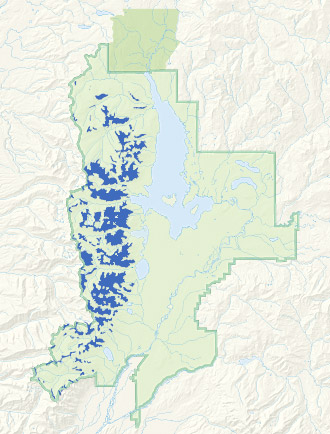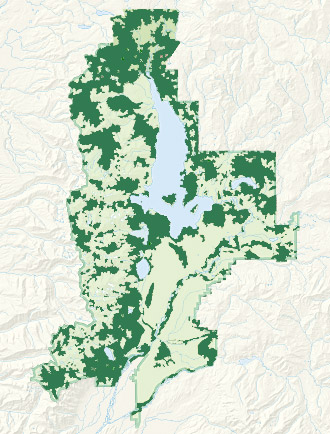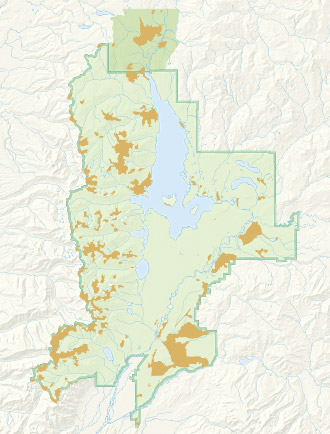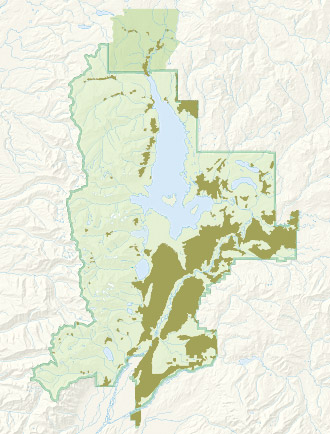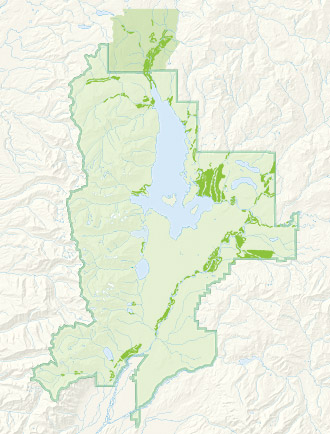Wetland Community
Overview
Wetland communities in Grand Teton National Park come in many forms, including willow swamps, marshes and potholes. Wetlands buffer against floods and provide critical habitat for many species. Each year, melting snow from the surrounding landscape recharges the wetlands. This fluid, ever-changing aquatic environment at the headwaters of the Snake River is a magnet for both wildlife and humans.
Wetland Community
Plants
Over 1,000 species of vascular plants grow in Grand Teton National Park and the surrounding area. Soil conditions, availability of moisture, slope, aspect, and elevation all determine where plants grow. Plants that require similar conditions are often found growing in the same area. Animals depend on plants within a community for food and shelter. The plants in an area often determine the animals that occur in that area. These associations form various wild communities.
 |
Yellow Pondlily
Nuphar polysepalumBy early summer, pads of the yellow pondlily cover the surface of small lakes and ponds and lakes such as Swan Lake. By June or early July, large yellow ball-shaped flowers bloom producing an idyllic image.
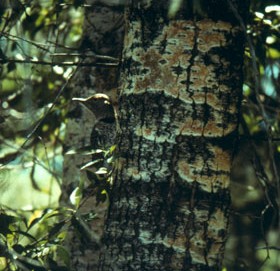 |
Narrowleaf Cottonwood
Populus angustifoliaIn spring as the leaves of narrowleaf cottonwood trees appear, they form a light green ribbon through Jackson Hole along the Snake River. The green darkens through summer. In autumn, this ribbon turns golden.
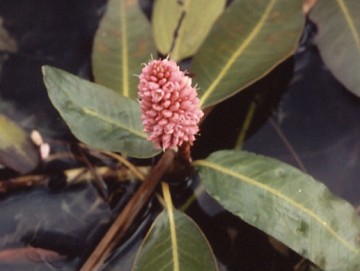 |
Water Smartweed
Polygonum amphibiumWater smartweed, also known as lady’s thumb, reminds one of a thumb with a nail painted bright red or pink. This aquatic plant has floating leaves, with blooms held erect on stems that project above the water.
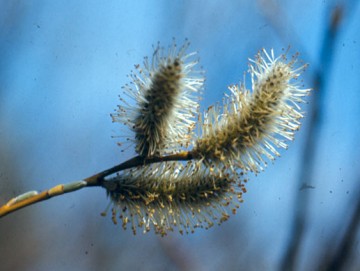 |
Geyer Willow
Salix geyerianaWillows are common and important species providing food and habitat for moose, waterfowl and songbirds. Twenty or more species of willow occur along rivers and streams, around beaver ponds and swampy areas.
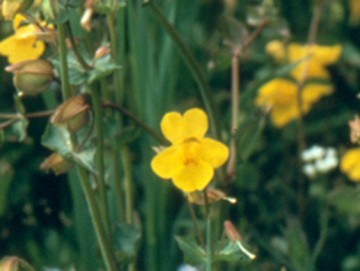 |
Yellow Monkey Flower
Mimulus guttatusThe yellow monkey flower is a bright yellow, open-mouthed, funnel-shaped flower with bright red spots in its throat. Look for it growing in small springs and seeps where it brightens the landscape.
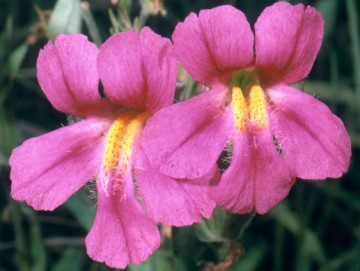 |
Lewis Monkey Flower
Mimulus lewisiiLewis monkey flower, named after Meriwether Lewis, has bright reddish petals and yellow throat that adds color to wet bogs and stream banks. This flower attracts hummingbirds, but bees are the usual pollinator.
Wetland Community
Mammals
With varied elevations and a variety of wild communities Grand Teton National Park is home to over 60 species of mammals. Large ungulates like moose, elk, mule deer, bison, and pronghorn are commonly seen along park roads. Although less common, large predatory mammals such as grizzly bears, black bears and coyotes are also regularly seen, while wolves and mountain lions are more elusive. Smaller mammals are abundant in the park, and species such as Uinta and golden-mantled ground squirrels, least chipmunks, red squirrels and pikas are commonly seen. Look for muskrats, beavers, or river otters in wetland communities. Bats frequently cruise above waterways for insects. Every wild community has its own assemblage of mammalian species.
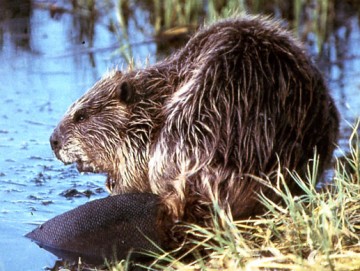 |
Beaver
Castor canadensisBeavers are the largest rodents in North America. They are safest in deep water produced by building a dam. They construct log and mud lodges on ponds or river edges. Foods are aspens, cottonwoods and willows.
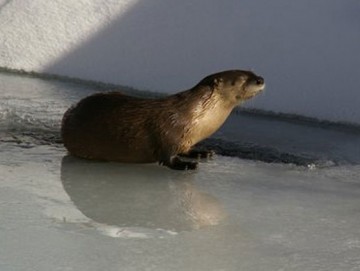 |
River Otter
Lutra canadensisRiver otters are large semi-aquatic weasels. These playful, intelligent carnivores feed on fish, frogs and crayfish. Look for them in the larger rivers, streams and lakes throughout Grand Teton National Park.
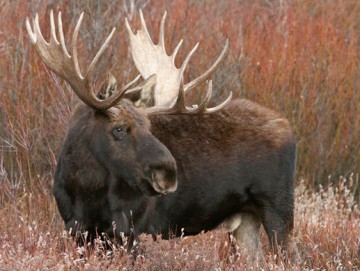 |
Moose
Alces alcesMoose are the largest member of the deer family. They feed on aquatic plants and willows. Male moose grow “palmate” antlers each year, shaped like your upturned palm with antler points projecting like fingers. (Photo credit: Dan Ng)
Wetland Community
Birds
Birds in Grand Teton National Park are varied and abundant with over 300 species having been observed in the park. Birds are most abundant during the spring and fall migration, although over 60 species regularly breed in the park. For the avid bird watcher the park can be a good place to observe a number of Rocky Mountain and Western species including the trumpeter swan, cinnamon teal, Barrow’s goldeneye, Swainson’s hawk, greater sage grouse, dusky (blue) grouse, great gray owl, broad-tailed and calliope hummingbirds, violet-green swallow, Steller’s jay, black-billed magpie, Clark’s nutcracker, mountain chickadee, dipper, mountain bluebird, yellow-headed blackbird, western tanager and rosy finch. Other commonly seen birds in the park include common merganser, bald eagle, osprey, sandhill crane, common raven, yellow and yellow-rumped warbler.
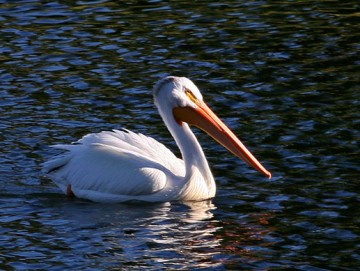 |
American White Pelican
Pelecanus erythrorhynchosMany park visitors are surprised to see pelicans in the park. American white pelicans breed on large inland lakes such as Yellowstone Lake. Some of these birds make daily flights to Grand Teton to feed.
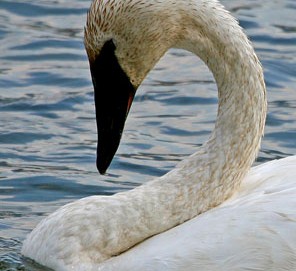 |
Trumpeter Swan
Cygnus buccinatorWhite with black eyes, bill and feet, the trumpeter swan is the largest waterfowl species in North America. It feeds by tipping its body to reach into the mud of shallow water to find tubers of aquatic plants.
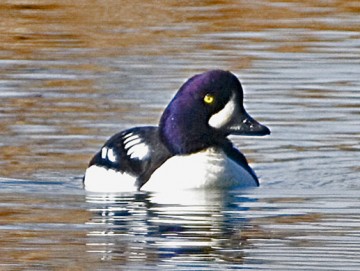 |
Barrow's Goldeneye
Bucephala islandicaBarrow’s goldeneye is the more common of two goldeneye species in the park. Males appear black and white. A dark purple head and white crescent under the eye, distinguishes it from the male common goldeneye. (Photo credit: USFWS)
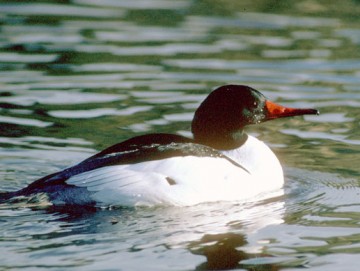 |
Common Merganser
Mergus merganserThe common merganser is a common fish-eating duck with a long serrated bill. In breeding plumage males with breeding plumage have dark green rounded heads. Females and non-breeding males have rust colored heads with a crest. (Photo credit: USFWS)
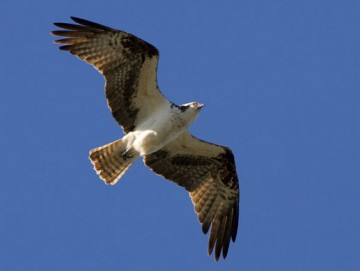 |
Osprey
Pandion haliaetusOspreys are large fish-eating raptors sometimes called fish hawks. Smaller than eagles, they capture fish by diving from a perch or from the air into the water feet first, grasping the fish with their sharp talons. (Photo credit: USFWS)
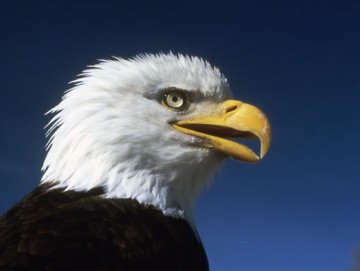 |
Bald Eagle
Haliaeetus leucocephalusDuring summer, bald eagles are often seen along the Snake River and some of the larger lakes. Immature eagles are a mottled brown, and do not develop the adults’ white head and tail until age four or five.
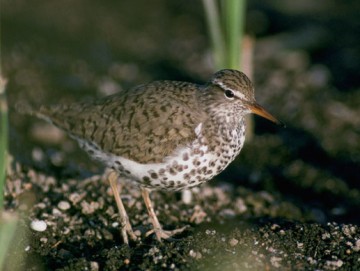 |
Spotted Sandpiper
Actitis maculariaUnlike most sandpipers that live on ocean beaches, the spotted sandpiper is found along fast moving rivers. It has a habit of bobbing up and down while searching for insects along the banks of the Snake River. (Photo credit: USFWS)
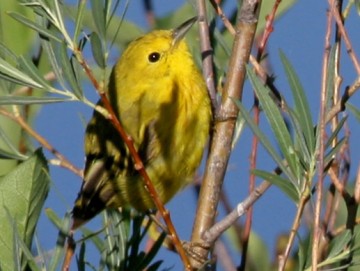 |
Yellow Warbler
Dendroica petechiaYellow warblers flit about in pursuit of insects on willows and cottonwoods. At a distance, they appear to be pure yellow, but males in breeding plumage have bright red streaks on their breasts. (Photo credit: Dan Ng)
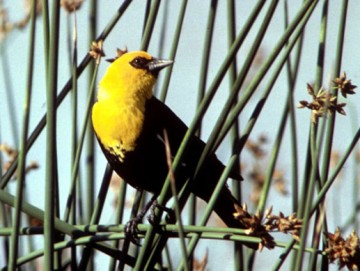 |
Yellow-headed Blackbird
Xanthocephalus xanthocephalusThe yellow-headed blackbird is aptly named. Black with a bright yellow head, it has white wing patches that appear in flight. It frequents Christian Pond and in nearby turnouts searching for insects. (Photo credit: USFWS)
Discover Grand Teton is funded by the Grand Teton National Park Foundation in partnership with the National Park Service.
gtnpf.org
gtnpf.org
